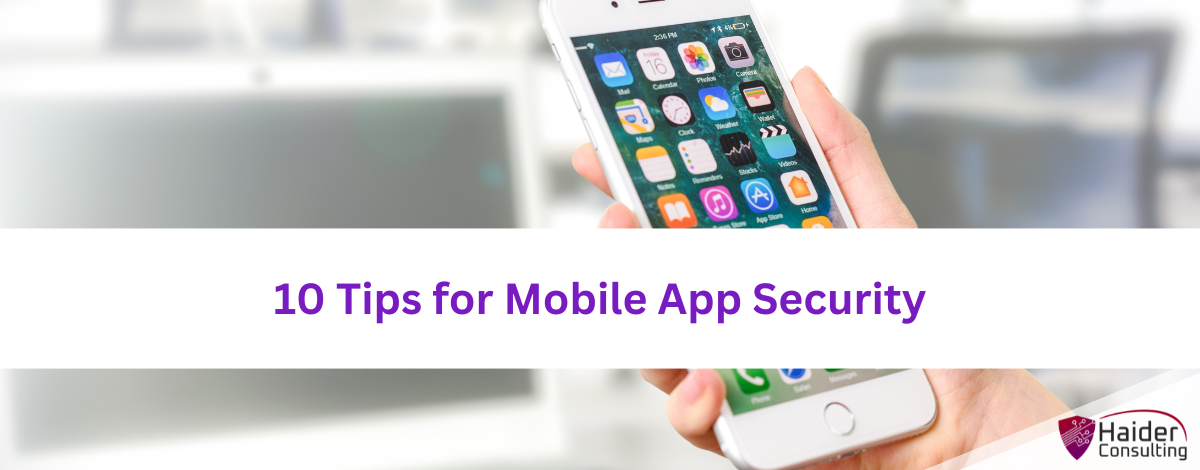Mobile apps have woven themselves deeply into our daily routines. We rely on them for everything from browsing and networking to communicating. However, these apps also expose us to potential security threats from cybercriminals who might steal our information or damage our devices.
According to 2024 research by Asee, approximately 75% of apps in app stores contain at least one security flaw, suggesting that three out of every four apps could pose a security risk. It’s crucial to exercise caution when downloading and using mobile apps. To help you navigate safely, here are ten straightforward tips for securing your mobile applications.
The Importance of Mobile App Security
Not only do 75% of mobile apps contain security risks, but business apps are even more vulnerable, with a threefold higher chance of exposing login details. Furthermore, even highly popular apps—those with over 5 million downloads—tend to have security flaws.
Using mobile apps isn’t always risk-free. Various vulnerabilities, such as unsafe internet connections and overly permissive app settings, can leave your data open to theft by hackers and criminals. To safeguard your information while using mobile apps, we will provide ten crucial security tips in the following section.
Top 10 Security Tips For Mobile App Users
Mobile apps bring convenience and functionality but also potential risks. By being cautious about your download sources, app permissions, and the networks you connect to, you can enhance the security of your data. Here are ten essential security tips every mobile app user should follow:
1. Download Apps from Official Sources
The foundation of mobile app security starts with where you download your apps. Not all apps are secure, even if they look legitimate. Always download apps from established sources like the App Store or Google Play.
These platforms perform security checks to ensure apps are safe before they’re made available. Avoid downloading apps from unknown websites as these can host malicious software that could compromise your device.
2. Check App Ratings and Reviews
Before installing an app, take a moment to read what others have said about it. If it has a high rating and positive reviews, it’s likely a safe bet. However, if there are numerous complaints or mentions of security issues, it might be best to avoid it.
3. Review App Permissions Carefully
Be cautious with the permissions an app requests. Some apps may ask for access to your location, camera, contacts, or other personal information. Think about whether these permissions make sense for the functionality of the app. If an app requests more permissions than it needs for its basic operations, it’s safer to skip the download.
4. Update Your Phone’s Operating System
Regularly updating your phone’s software is crucial. Updates often include security fixes that close loopholes, making it harder for hackers to gain unauthorized access to your device.
5. Use Strong Passwords
Strong passwords are your first defense against hacking. For every app you use, from emails to social media, ensure your passwords are complex and unique. Mix letters, numbers, and symbols, and avoid using the same password across multiple apps. This way, even if one password is compromised, your other accounts remain secure.
6. Enable Two-Factor Authentication
Two-factor authentication adds a second layer of security to your logins. Typically, this involves receiving a code on your phone or email which you must enter after your password. This makes it much more difficult for unauthorized users to access your accounts.
7. Beware of Public Wi-Fi
Public Wi-Fi networks are not secure. Cybercriminals can easily intercept data on these networks. Avoid accessing sensitive apps like banking or email over public Wi-Fi. Wait until you can connect to a secure network to ensure your data remains safe.
8. Log Out of Apps When Not Using Them
Always log out of apps when you finish using them, especially those that contain sensitive information like banking or email accounts. Logging out can prevent unauthorized access if your phone is lost or stolen.
9. Keep Your Apps Updated
App developers often release updates to fix security vulnerabilities. Make sure you update your apps regularly to take advantage of these security enhancements and protect your personal information.
10. Utilize Built-In Security Features
Many apps offer extra security features such as fingerprint scanning or facial recognition. Activate these options to add an additional layer of security to your apps, making it harder for others to gain unauthorized access. Remember, these tips are just part of a comprehensive approach to safeguarding your data, so continue to educate yourself on safe downloading and data protection practices.
Stay Safe While Using Mobile Apps
Keeping your mobile apps secure isn’t complicated. Always be cautious and considerate about your actions. Stick to downloading apps from reputable sources, and ensure both your device and applications are regularly updated. Use robust passwords and enable additional security measures whenever available.
Ultimately, your security is under your control. If you’re unsure about how to protect your apps, don’t hesitate to seek assistance. For further guidance on mobile app security, please contact us anytime.
Book My 17-Minute Call





